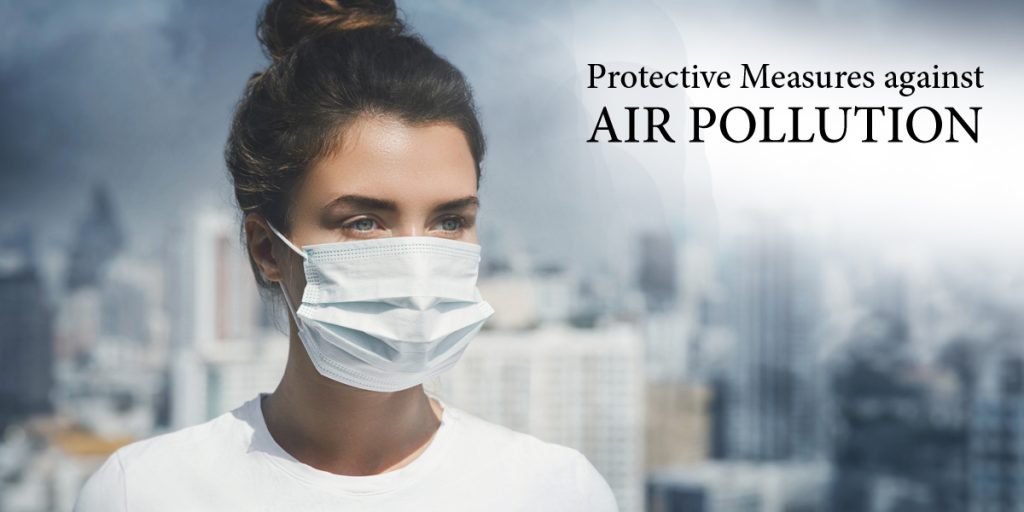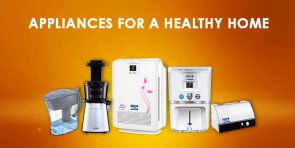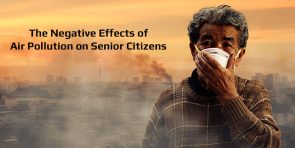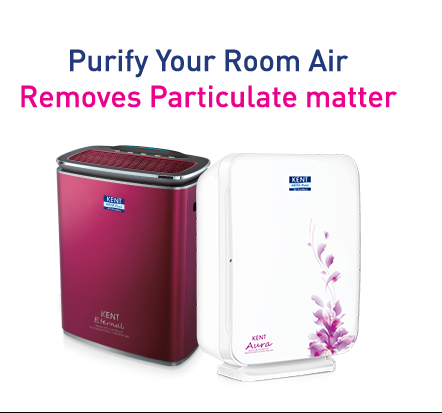10 Ways to stay protected from Unhealthy & Polluted Air
As per World Health Organisation, 9 out of 10 people breathe highly polluted air worldwide. With the level of smog increasing day by day, air pollution has become a major threat to health. Approximately seven million people die because of air pollution every year; of these seven million, 4.2 million die due to outdoor air pollution, the rest fall prey to the imperceptible indoor air.
These deaths are primarily because unhealthy air quality leads to stroke, heart disease, chronic obstructive pulmonary disease, lung cancer and acute respiratory infections.
To avoid such serious and sometimes fatal health hazards, it is advisable to remain indoors when outdoor air pollution levels are high – but ensure that indoor air is treated and pure. In this article, we shall look at the 10 ways you can choose to protect yourself from unhealthy air quality.
What does Unhealthy Air Quality mean?
Unhealthy air quality is a result of air pollution, usually caused due to the presence of pollutants like emitted fuel particles, smoke, PM 2.5, bacteria etc. in air. These fine particles enter our bodies through the lungs and spread through our blood vessels.
Outdoor air pollution also travels indoor spaces through ventilators, windows, door and several other inlets and bear various health hazards. Indoor air pollution is 10 times more dangerous than outdoor air pollution. While one has zero control over outdoor air pollution, one can still control indoor air pollution by using air purifiers such as KENT air purifiers, equipped with HEPA technology and Ozone Disinfection.
Unhealthy Air Quality is responsible for asthma, coughs, dry or blocked nose. It makes one vulnerable to bronchitis, migraine, various heart and lung diseases. If one thinks that only cities are prone to air pollution, then one is mistaken. Even rural areas face the same fate. Smoke emitted from tractors, trucks and cars, dust from ploughing fields, smoke from stubble burning and wood burning lead to air pollution in these areas.
How to measure the level of very unhealthy air quality?
Air Quality Index (AQI) is used to measure the level of unhealthy air quality. AQI judges air quality based on the score from 0 to 300. The higher the AQI score, the higher the health risks. If the AQI level is higher than 100, then it is a matter of serious concern. One can check AQI levels through online apps, newspapers, television etc.
If AQI levels reach 101 to 150, people who are at risk should lessen their outdoor time. When the AQI levels reach 151 to 200, everyone should limit their outdoor exposure. With increasing levels of air pollution, AQI sometimes even crosses the mark of 400.
Who is affected by Unhealthy Air Quality?

Unhealthy air quality affects everyone. But certain people are more vulnerable. Such risk group people should avoid spending more time outdoors during high AQI levels and when they are indoors, it is preferable that they should use air purifiers. The below mentioned list will describes the people who are at higher risk from high AQI levels:
- Elderly people
- People ailing with heart diseases
- People with lung and breathing problems
- People with Asthmatic conditions.
- Children
- Pregnant women.
- People who spend most of the time outdoors.
- Diabetic people.
Top ways to protect yourself from Unhealthy Air
As discussed above, bad air quality leads to various medical conditions. The presence of diverse pollutants in the air makes it a major health threat. But when unhealthy air is omnipresent, do we have any options to protect ourselves from breathing it?
Here are the top 10 ways to protect yourself from unhealthy air:
- Air pollution increases during the day, so one can plan one’s outdoor activities early in the morning. Plan your outdoor activities as per the outdoor air pollution levels.
- Try spending most of your time indoors, specially when the temperature outside rises. As air pollution grows along with increasing heat.
- Get an air purifier to purify indoor air. Indoor air also gets polluted, due to outdoor pollution and outdoor polluted air traveling indoors through various inlets. Check if the air purifier has HEPA purification or Ozone disinfection. Air purifiers also clear odour and pet dander from indoor air.
- Avoid crowded and busy outdoor places because with increase in number of people the level of pollution also increases. It is not just car fumes that you should be concerned about, in fact even a busy place will fill your lung with 20m particles, like black carbon, nitrates, sulphates, ammonia and mineral dust.
- If you have to visit an outdoor polluted space, cover your face with a handkerchief or wear a mask. This will at least help as a preventive shield for you. The handkerchief or mask will sieve some of the pollutants while breathing. However, such protection is of no use for minute particles which are invisible to the naked eye.
- Include antioxidant-rich fruits and vegetables in your diet. This will create a shield for your immune system, making your body fit to fight against some of the airborne diseases.
- Check AQI levels before stepping out of your house. If the air pollution level is higher then skip stepping out. Air Quality Index levels can be easily checked via different online applications.
- Use less energy at home. Not just cooking fuel, but gadgets and appliances at home also use power and energy, thus adding different layers of fumes to indoor air. Along with it, the use of fuel for cooking, consumption of electricity, several odours, pet dander add to indoor pollution level.
- While traveling, try car-pooling, or use public transport. This will reduce the number of vehicles on the road.
10.Protect yourself from various kinds of smoke by avoiding places with a high level of smoke emission, like industrial and factory areas, or agricultural fields with stubble burning. Also pledge not to indulge in any activity that increases air pollution levels.
Advantages of using KENT Air Purifier
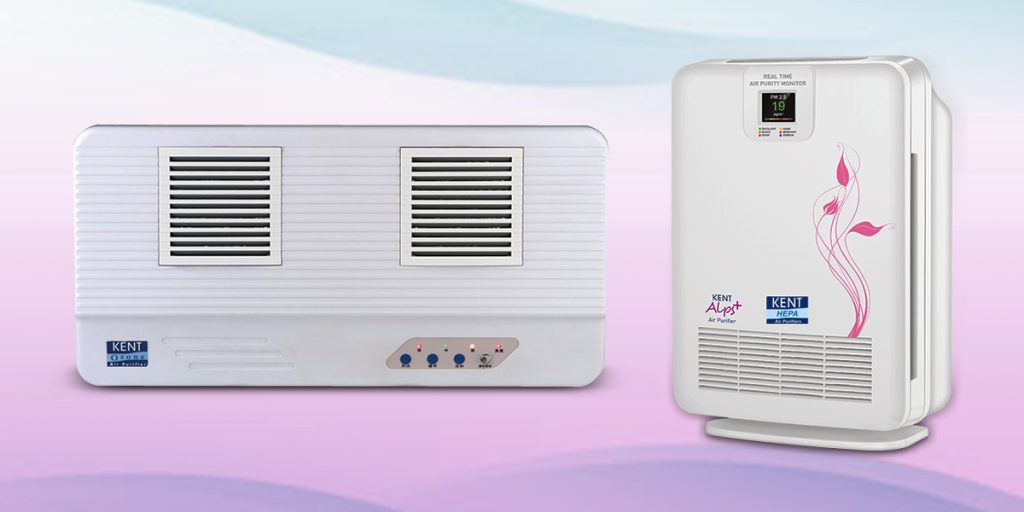
Now, let’s move to some benefits of using an air purifier at home for indoor air pollution. Air purifiers provide us with the purest form of air, free from germs, bacteria, viruses and any kind of airborne diseases. Listed are the benefits:
- KENT air purifiers use revolutionary HEPA Air Purification and Ozone Disinfection to purify air quality.
- KENT air purifiers remove bacteria. PM 2.5, pet dander, odour and other pollutants from indoor air.
- KENT’s wide range of air purifiers also come with the convenience of both wall-mounted and table-top models.
- KENT air purifiers come with high-efficiency and low-maintenance home air cleaner with CE certification.
One cannot do much about the poor outdoor air quality, however, by opting for most of the aforementioned solutions, you can protect yourself and your loved ones from the bad effects of air pollution. A small step taken by you can help you and others to breathe freely.


